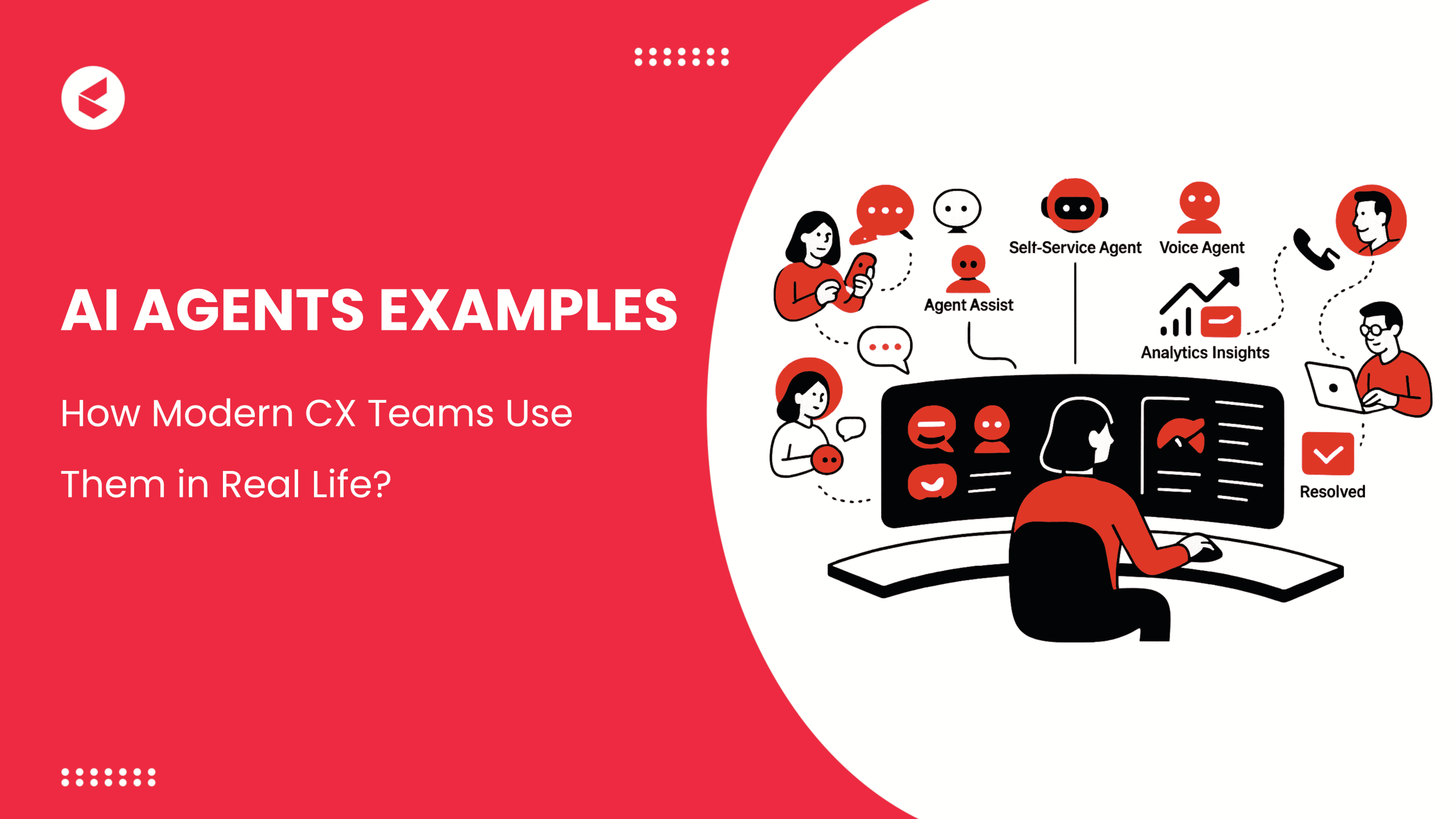We asked an AI to come up with a real strategy for converting frustrated users into loyal ones. It served us this:

A Frustration Flip protocol, followed by a string of nice-sounding gestures that sound good on paper, but miss the mark completely in practice.
No mention of operational limits. Absolutely no understanding of how support works in real-time. No clue what scaling this would require.
Yet, this is what most teams are relying on: overly confident, overly abstract AI outputs to build customer experience systems. That’s risky because in 2024, 26% of contact centers plan to implement AI in customer experience (Deloitte Digital). 42% of contact centers plan to adopt it by 2025, and 17% aim to do so after 2026.
In this blog, we’re breaking down how prompt engineering is quietly reshaping how support works and why getting the prompt right is now half the battle.
What Prompt Engineering Means in CX
Prompt engineering isn’t about getting clever with words. It’s about designing behavior. In a support context, a prompt is a blueprint that controls how the AI understands, responds, escalates, and follows through. Get it wrong, and your model won’t just sound off, it’ll act wrong.
Here’s the difference: a user types “I want to cancel.” A half-baked prompt will send them a refund article. A well-structured prompt will ask, “Is this about your order, your subscription, or your upcoming appointment?” clarifying intent before anything breaks.
Prompts also control what happens behind the scenes. One input can trigger multiple moves: extract the user ID, log the ticket, send a follow-up summary, and notify a human agent if needed. That’s task chaining, and it only works if the prompt gives clear instructions and fallback logic.
The point is that this isn’t just about making AI sound helpful. It’s about making it useful under pressure. When tone, logic, and next steps are all wrapped into a single line of input, that line better be razor-sharp.
Bad prompts make AI reactive. Good ones make it reliable. In CX, that gap shows up fast, usually in the form of a churned customer.
Why It’s Getting More Complex and More Powerful
According to IBM, 65% of customer service leaders expect to use Gen AI to enhance customer satisfaction.
But the systems powering that progress are built on intricate prompt layers that operate more like infrastructure than a copy. Support conversations are no longer simple. Prompt engineering now handles branching paths, shifting intent, and real-time system decisions.
1. Prompts control more than replies:
Support conversations aren’t static. A single prompt now sets the tone, triggers tasks, and guides escalation. It drives the logic of what happens next. That makes prompt design a system-level decision, not just a writing task.
2. Fallback logic is part of the stack
Modern support flows aren’t linear. If the model encounters confusion or a missing field, fallback prompts decide what to do next: clarify, escalate, or close the loop. Without this structure, support systems stall. With it, they become resilient under edge cases and ambiguity.
3. Prompt stacks are modular:
Instead of one massive prompt per use case, teams now build stacks of smaller prompts triggered by specific inputs. These stacks evolve as conditions change, such as product tier, user status, or intent shifts. This modularity makes support systems more flexible and scalable.
| Example: A prompt for a high-tier user might be: “Hi Alex, I see you’re on our Priority plan. Want me to schedule a call with your account manager or send a support summary right now?” For a standard user: “Happy to help! Would you prefer to chat with support or check our troubleshooting guide?” The system dynamically switches prompt stacks depending on tier, ensuring tone and options match the user’s value segment. |
4. They pull from live context:
Prompts no longer rely only on static inputs. They access CRM data, past tickets, and recent interactions to adjust responses in real-time. That customer-aware context helps the model avoid repetitive questions and offer relevant, accurate support from the start.
| For example, if the system sees that a customer has already submitted two tickets about delivery delays, a follow-up prompt might be: “Hi Jamie, I see you’ve contacted us recently about your shipment. Want me to check if it’s been updated or connect you with our logistics team?” This avoids re-asking questions and feels more like a handoff than a reset. |
5. They trigger full actions:
Today’s prompts are wired into backend systems. They can create tickets, update account status, or automatically issue credits. Prompting now includes downstream execution, not just language generation.
From Whisperers to Architects: What’s Next
Prompt engineers started as quiet operators behind the scenes. Now they’re becoming system architects. The job is to design logic, map edge cases, and build adaptive flows that hold up in real-time.
As support teams deal with increasing volume, language ambiguity, and inconsistent customer behavior, the role is shifting fast. What used to be trial and error with prompts is evolving into a full strategy function baked into tooling, workflows, and governance. Here’s what the next stage looks like:
1. Reusable Logic Becomes A Foundation
Prompts are no longer one-offs written per use case. Engineers are building libraries of reusable prompt components tied to intents, actions, and fallback rules.
This saves time, reduces errors, and makes it easier to onboard new models or agents. CX teams need consistency across flows, and modular prompt logic is the only way to scale it.
2. Adaptive Systems Are The New Standard
Rigid playbooks break when customers go off-script. Prompting is evolving to handle tone shifts, language drift, and sudden escalations without crashing the flow.
These systems adapt in real-time based on sentiment, urgency, or user behavior. CX teams can’t afford brittle automations; they need support that bends without breaking.
3. Contextual Awareness Will Get Deeper
Regulations, regional tone differences, and brand voice alignment all require smarter prompting. Engineers are building prompts that adapt based on location, customer segment, or risk thresholds, considering all this context.
A refund policy in New York might sound different than one in Berlin. Future prompts won’t just generate responses; they’ll enforce compliance, preserve tone, and keep the entire operation in check.
Prompting is Now the Operating Layer of Support
Prompting is no longer about crafting clever inputs. It has become the operating layer of AI-powered support, one that demands precision, structure, and reusability. The best CX teams aren’t just training AI to respond; they’re building prompt systems that think, act, and improve with every interaction.
That’s where Kapture comes in.
Built for scale, Kapture’s Agentic AI platform helps CX teams move faster and smarter by transforming every prompt into action. From self-serve automation to agent co-pilots to real-time insights, Kapture supports every part of the support journey across channels, teams, and verticals.
Whether you want to deflect tickets, speed up resolution, or improve decision-making, Kapture equips your team to run intelligent, human-aware, fully orchestrated support systems.
Discover how Kapture enables enterprise CX teams to build smarter AI support systems without starting from scratch.
Request a demo and see the platform in action.
FAQs
A prompt engineer designs the logic behind how AI responds, escalates, and executes actions in real-time support scenarios. It’s part scripting, part systems design.
Scripts are static. Prompts are dynamic, contextual, and modular, designed to adapt based on user input, behavior, or even backend data.
No. The best teams utilize modular prompt stacks: small, reusable components triggered based on input or conditions. This scales better than writing one-off prompts for each use case.
With proper fallback logic, real-time data access, and action chaining, prompts can handle a surprising range of scenarios. However, they still require human intervention for edge cases and judgment calls.













